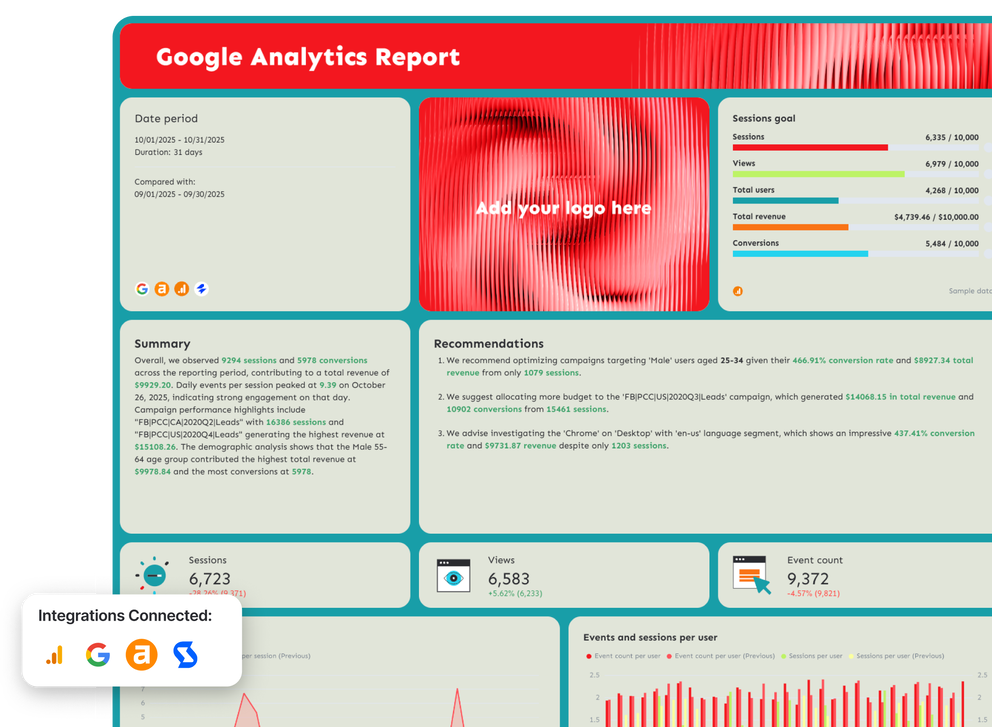What Should an SEO Site Audit Report Template Include?
A strong SEO audit report template gives clients a clear, organized look at their website’s technical health, visibility, and overall SEO performance.
Based on Whatagraph’s free SEO audit report sample, here are the sections it should include:
1. Google Analytics Report
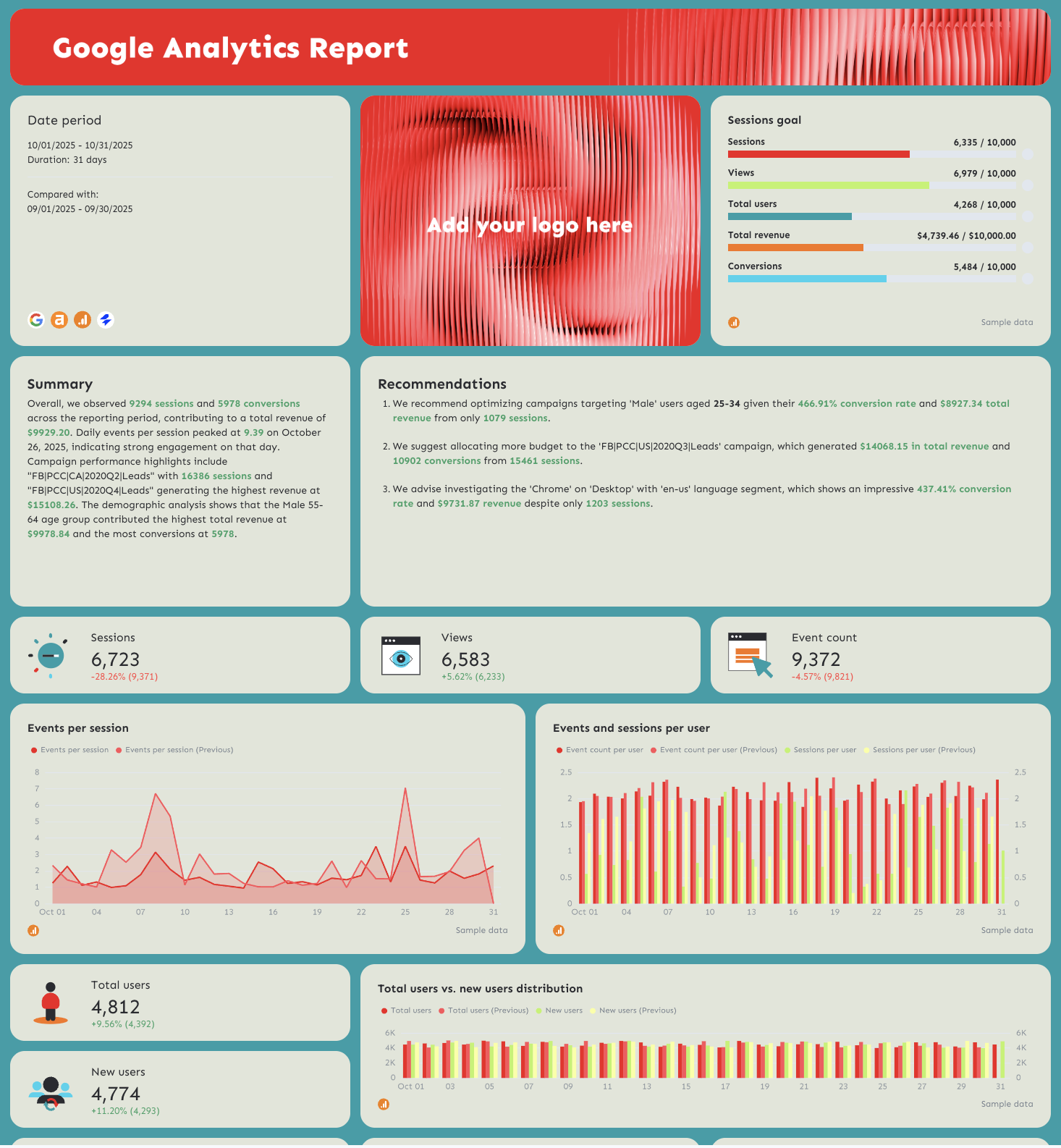 This page highlights how users interact with your site and shows whether your SEO strategy is actually driving behavior.
This page highlights how users interact with your site and shows whether your SEO strategy is actually driving behavior.
What to include:
- Sessions, total users, new users, conversions, and revenue (core SEO performance metrics).
- Events per session to reveal engagement quality.
- Conversion vs. sessions trend graphs for easy data visualization.
- Device performance (browsers, platforms, languages).
- Campaigns performance broken down by traffic sources.
- Demographic activity to understand audience behavior
Why it matters:
This section helps you identify organic traffic trends, audience segments, bounce rate issues, and which marketing channels (SEO, paid, social media, or ecommerce) perform best.
2. Google Search Console Report
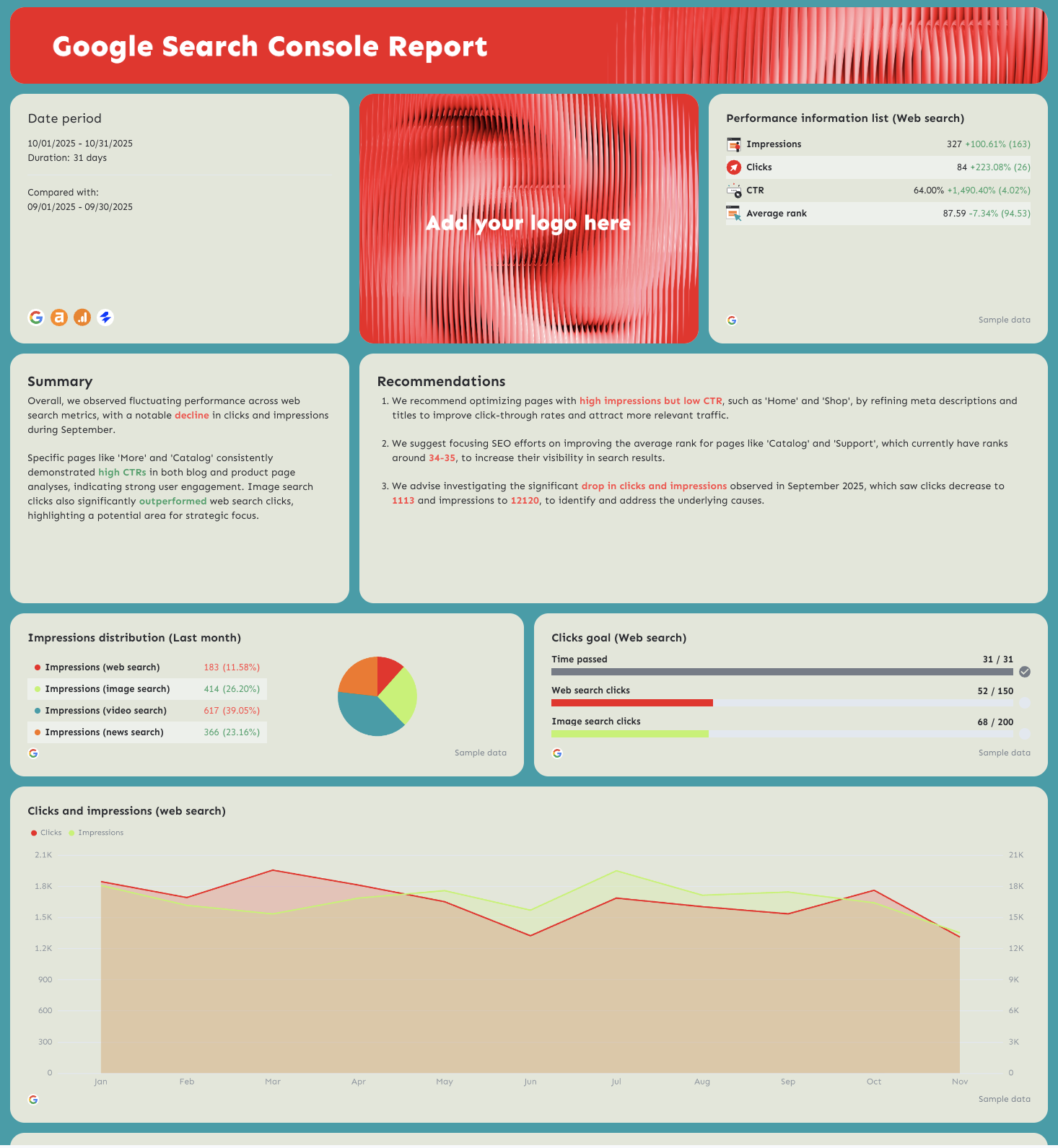
This part is essential for spotting SEO issues, diagnosing indexing problems, and understanding your performance in search engines.
What to include:
- Impressions, clicks, CTR, and average rank from web search and image search.
- Blog & product page performance with CTR, impressions, and ranking movement.
- Click goals and performance trends over time.
- Recommendations on improving meta descriptions, title tags, and overall on-page SEO.
Why it matters:
GSC is the backbone of any website seo audit report template, showing how Google crawlers view your site, whether your xml sitemaps and robots.txt are functioning, and which keywords improve or decline.
3. SE Ranking Report
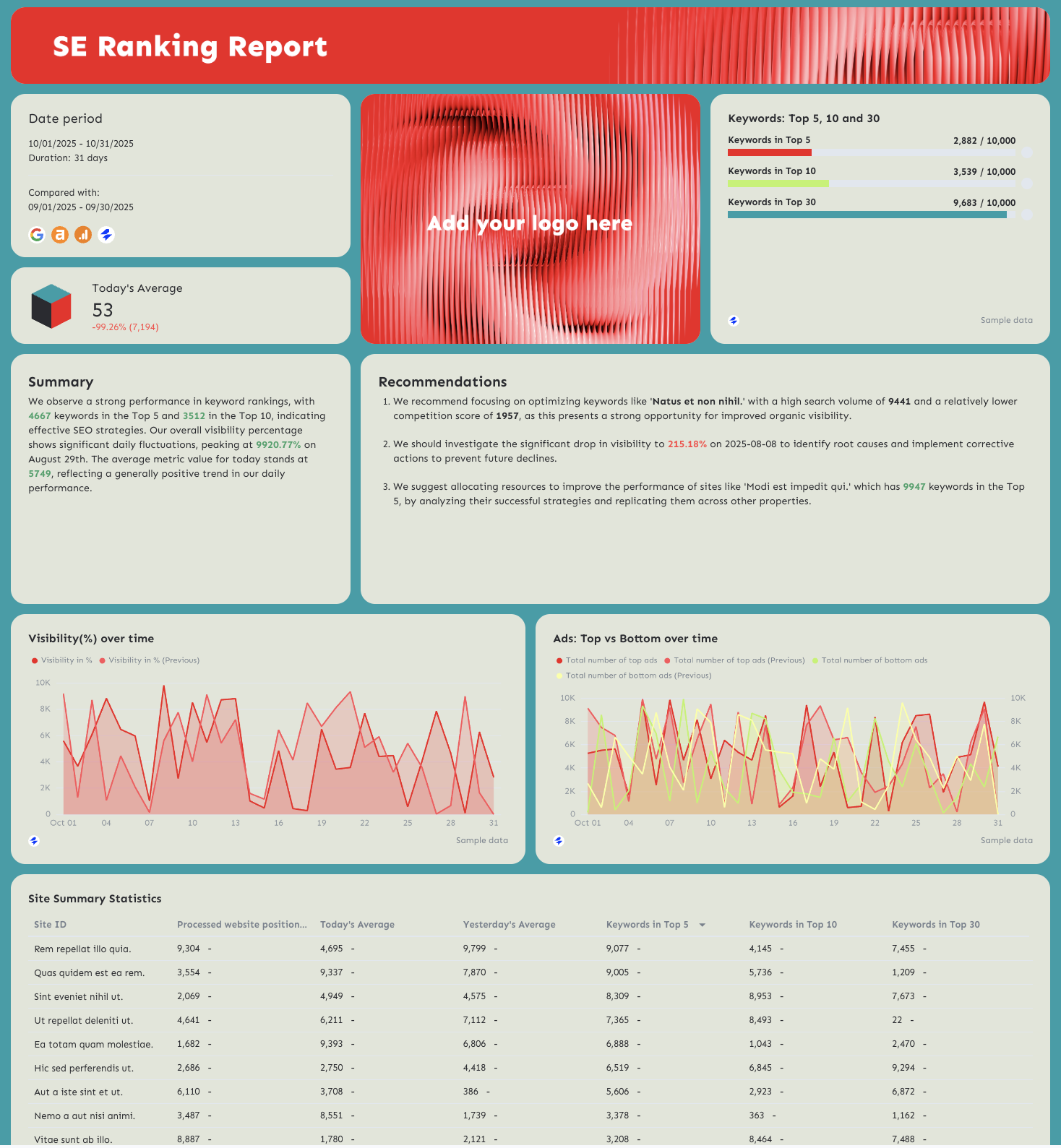
This page focuses on keyword visibility and ranking movement—key parts of any SEO audit or seo audit checklist.
What to include:
- Keywords in Top 5, 10, and 30, plus keyword volatility trends.
- Visibility (%) over time charts to track fluctuations.
- Ads: top vs bottom positions for SERP insights.
- Site summary statistics covering website position and daily averages.
Why it matters:
This section evaluates keyword research, SERP trends, and whether your current content supports your target keywords.
4. Ahrefs Report
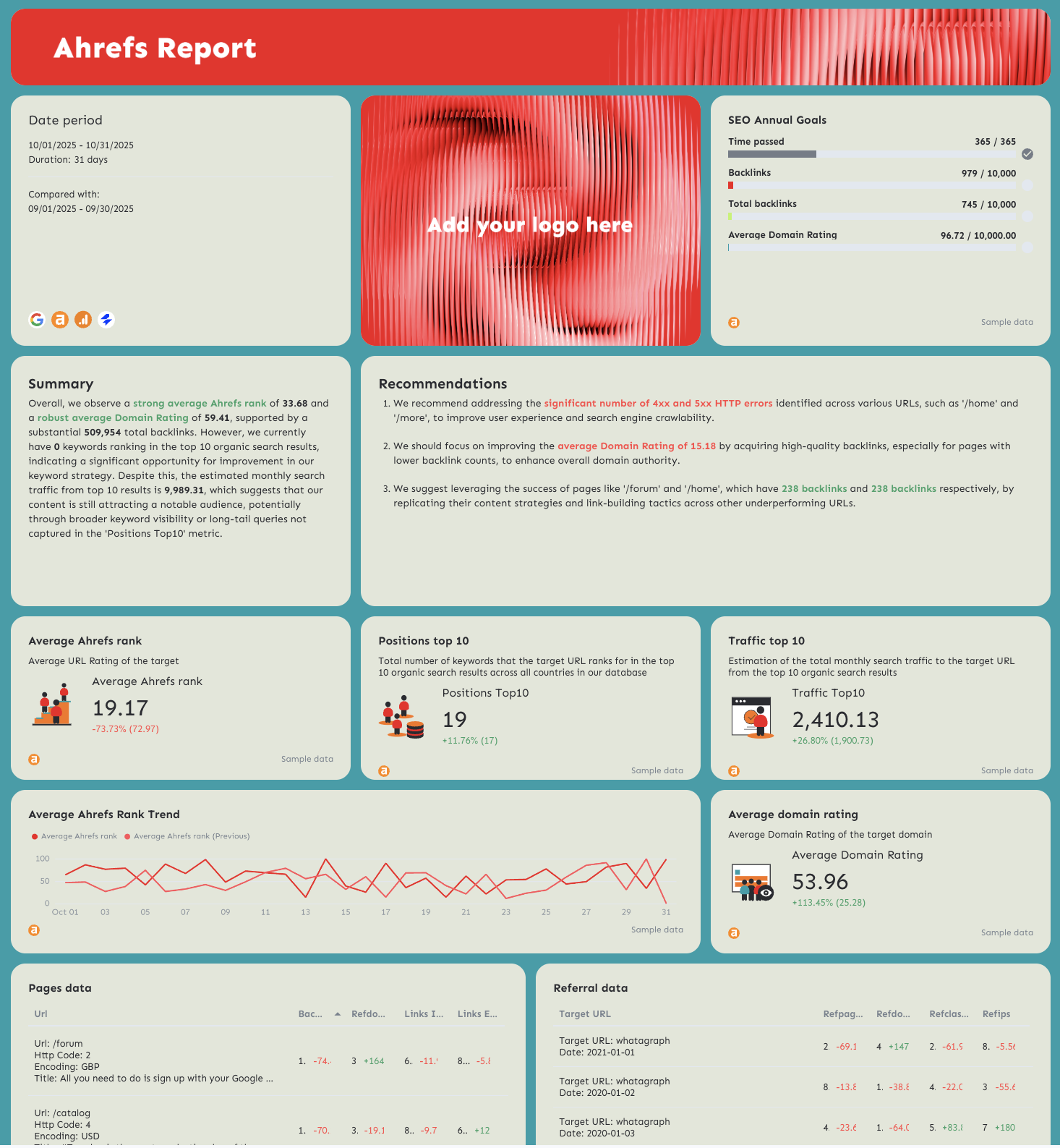
Great for analyzing your backlink profile, technical health, and off-page authority.
What to include:
- Average Ahrefs Rank, URL Rating, and Domain Rating.
- Total backlinks and referring domains.
- Top 10 organic traffic estimates.
- Pages with 4xx / 5xx errors, broken links, or duplicate content problems.
- Referral data for link-building insights.
Why it matters:
This is your off-page SEO health check in your technical SEO audit report template—covering backlinks, anchor text, structured data, and domain authority signals that help you rank higher.
5. GEO Overview Report
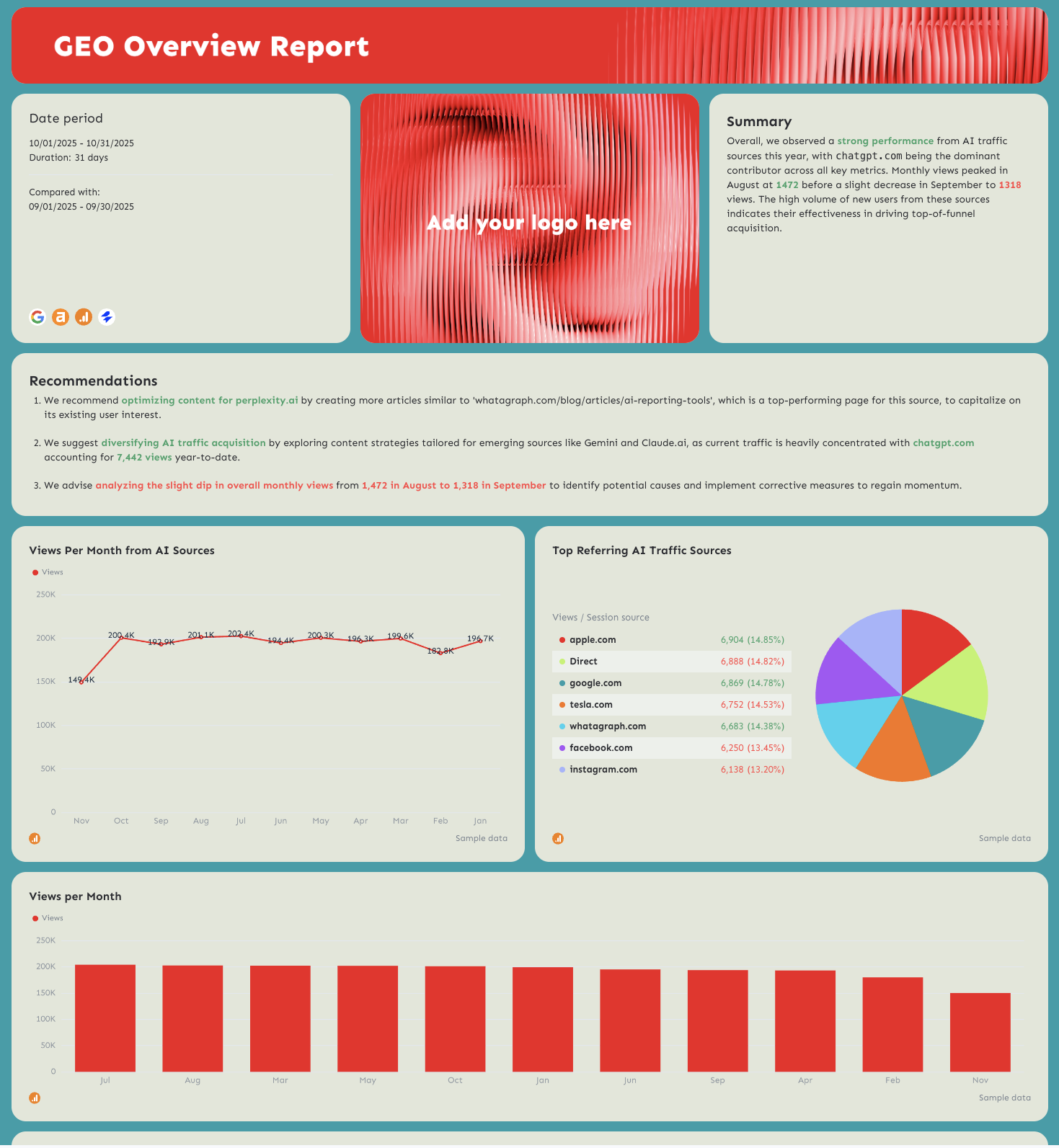
This final page gives you a high-level look at website performance across geographic and AI-driven traffic sources.
What to include:
- Views per month from AI sources.
- Top referring AI sources like ChatGPT, Perplexity, Microsoft Copilot e.t.c.
- Session breakdown by AI sources and by URLs.
Why it matters:
This helps identify which regions and external sources contribute to search visibility, exposing growth opportunities in local SEO, international markets, or GEO digital marketing initiatives.
